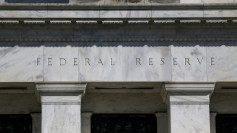U.S. mortgage rates experienced their steepest drop in two years, igniting a flurry of refinancing activity and providing a glimmer of hope for a housing market that has been stymied by high borrowing costs.
According to data released by the Mortgage Bankers Association (MBA) on Wednesday, the average contract rate for a 30-year fixed mortgage fell by 27 basis points to 6.55% in the week ended August 2, the lowest level since May 2023. The rate for a five-year adjustable mortgage also saw a significant decrease, dropping 31 basis points to 5.91%, the lowest this year.
This dramatic decline in mortgage rates was accompanied by a nearly 16% surge in refinancing applications, pushing the refinancing index to a two-year high of 661.4. Mortgage applications to purchase homes also saw a modest increase of 0.8%, marking the first advance in a month. Overall, the index of mortgage applications rose by 6.9%, reaching its highest level since the beginning of the year.
"The decline in rates should set the stage for a modest recovery in transactions for the rest of the year, provided that recession fears prove unfounded," said Thomas Ryan, North America economist at Capital Economics. "We think this marks a turning point for the housing market, which has been frozen for a while now."
Mortgage rates tend to track U.S. government securities, and the recent drop can be attributed to a significant decline in Treasury yields. This decline followed a disappointing jobs report, which fueled expectations that the Federal Reserve might implement more aggressive cuts in borrowing costs. The anticipation of potential rate cuts led to a debate among policymakers about whether the central bank would opt for a 50-basis-point cut at its September meeting.
The average 30-year mortgage rate has now fallen by 0.74 percentage points from its peak of 7.29% in April. However, rising home prices continue to pose a challenge for prospective buyers. A further increase in housing listings could help mitigate price growth and revitalize sales of previously owned homes.
The MBA survey, which has been conducted weekly since 1990, covers over 75% of all retail residential mortgage applications in the U.S. The data includes responses from mortgage bankers, commercial banks, and thrifts.
Weak Jobs Data and Fed Rate-Cut Signals Contribute to Mortgage Rate Drop
The notable decline in mortgage rates also coincides with weak jobs data and signals from the Federal Reserve that it might start cutting its policy rate as early as September. The Labor Department's latest jobs report revealed a rise in the U.S. unemployment rate to 4.3% in July, along with a slowdown in hiring, raising concerns about a potential recession.
The gloomy jobs report triggered a decline in equity markets, which reverberated globally. This led to a rally in U.S. Treasuries, driving down yields and subsequently lowering mortgage rates. This development offers a silver lining for millions of U.S. households seeking new homes or cheaper housing costs.
"The Fed's shift in focus to the health of the labor market, as well as efforts to curb inflation, has translated into lower mortgage rates as investors anticipate the central bank's next move," said San Francisco Fed President Mary Daly. "You already see policy working, even before we cut the rate."
Interest-rate futures now suggest that the Fed might cut rates by a total of one percentage point by the end of the year, starting with a half-point reduction next month. Despite these projections, more than 4 million mortgages currently have rates of 6.5% or higher, according to Intercontinental Exchange's ICE Mortgage Monitor. Conversely, over 60% of mortgages have rates below 4%, indicating that a significant drop in mortgage rates would be necessary to make refinancing or purchasing a new home worthwhile for many homeowners.






